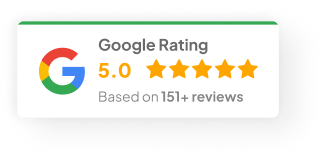24 Sep 25
Web Page UI Design: Key Principles That Will Make Your Site Stand Out
A website is usually the first stop for anyone curious about a business. It’s where they make that snap judgment—do I trust this brand or not? Good design is more than pretty colors. It’s how people decide to click, read, or buy.
When a site’s UI (User Interface) is done well, visitors don’t have to think too hard. They just know what to do next. That’s what separates a site that gets ignored from one people come back to.
1) Keep It Simple
Too many sites try to pack everything in. The result? Clutter. People don’t know where to look, so they bounce. A clean layout, with clear next steps, works better every time.
- 88% of online consumers are less likely to return after a bad user experience.
- Less noise means more action—clicks, forms, purchases.
- Simple design = less confusion.
2) Be Consistent
Ever land on a site where the homepage feels sleek, but the checkout page looks like it came from another world? That mismatch kills trust.
Consistency in fonts, colors, and layout creates a rhythm. Visitors stop worrying about the design and just move through the site naturally. That’s exactly what you want.
3) Mobile First, Always
More than half of global web traffic is mobile. If the site doesn’t work on a phone, half the audience is gone before they even see the offer.
Responsive design adjusts to every screen. It’s not just for users either. Search engines give mobile-friendly sites a rankings boost. So it’s user experience and SEO in one.
4) Make It Easy to Read
Design isn’t only about images. The way text is presented matters just as much. Visitors should be able to skim and still catch the key points.
- Headings and subheadings break things up.
- Short paragraphs keep attention.
- Contrast and font choice affect trust more than most people think.
This is what’s called visual hierarchy; it’s basically guiding the eye so people don’t get lost.
5) Use Interactive Elements, But Don’t Overdo It
A button that lights up when hovered, a product image that zooms, these small touches help. They make the site feel alive and guide action.
The mistake is throwing in too much—auto-play sliders, heavy animations, or endless pop-ups. That just slows things down and frustrates users. Interactivity should support the goal, not distract from it.
Why Professional Design Pays Off
DIY templates can get a business online, but they rarely deliver the same results as a site built by professionals. Balancing all these principles takes skill and experience.
Forrester reports that a well-designed user interface can increase website conversion rates by up to 200%. That’s not decoration, that’s profit.
Picking the Right Agency
If hiring a design agency is on the table, here’s what to check for:
- Experience – Have they delivered real results, not just pretty pages?
- Conversion focus – Do they care about sales and leads, or just looks?
- Tailored work – Is the design built around your business, not a cookie-cutter template?
- Portfolio – Can they show past projects that line up with your needs?
- Support – Do they stick around after launch to refine and improve?
Why Chromatix
Chromatix has built a reputation for design that converts. Every decision, from layout to button placement, is tied back to performance. It’s about creating websites that aren’t just digital posters—they’re sales tools.
From planning through ongoing optimization, the team focuses on making sure every pixel has a job. That’s how their clients end up with sites that impress and perform.
Final Word
UI design isn’t just surface-level. It’s strategy, usability, and trust wrapped together. Simplicity, consistency, responsiveness, readability, and smart interactivity—those are the pillars.
Businesses that want to skip trial-and-error often find an agency is the faster path to a site that works. The right partner makes sure design decisions drive growth, not just style.


